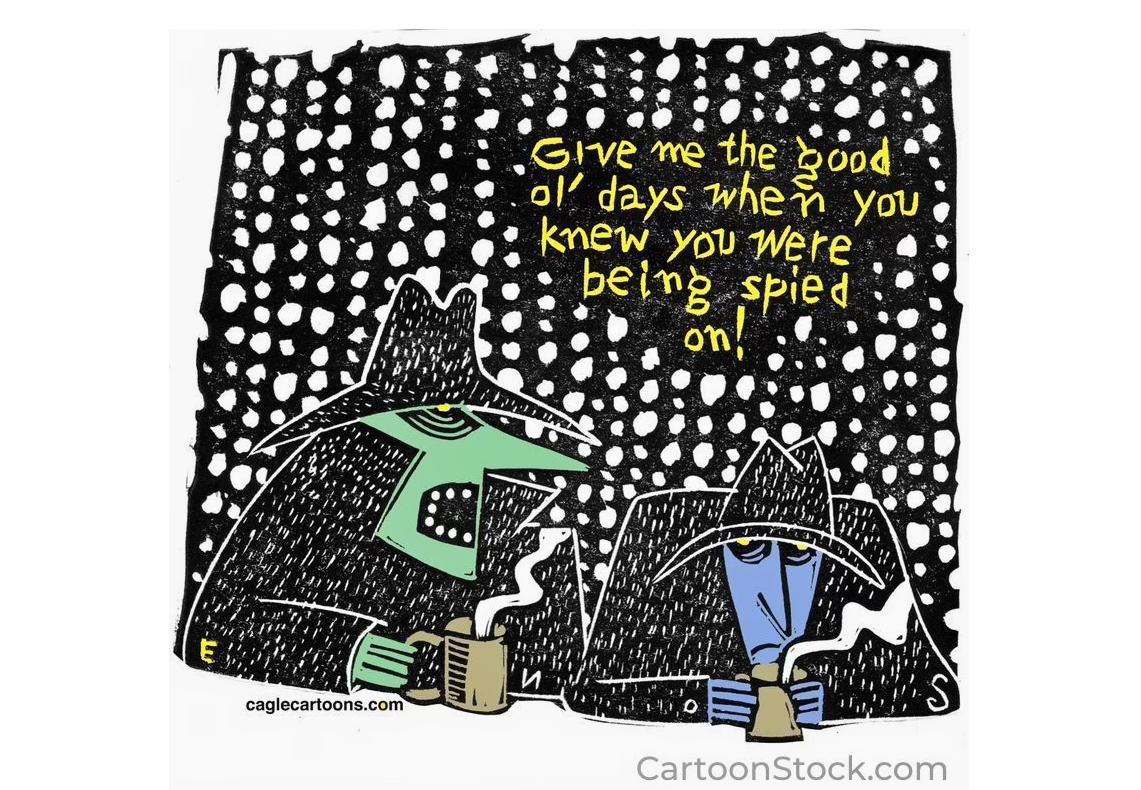Since the brilliant infiltration into Iran's secret nuclear sites and leadership by Mossad (Israel's spy agency) allowed Israel and the U.S. to destroy most of Iran's capacity to exterminate the Jewish state and much of the western world, I have been reflecting on spies that I have known or known about. Of course, the secret of Mossad's outstanding success and espionage requires, above all, complete secrecy. I am only writing about the three outstanding spies I’ve known because they are no longer alive.
As the International Herald Tribune's Swiss Features Correspondent, I was given free rein to choose my stories. Celebrities were always at the top of my list. Switzerland has long been an escape for the famous, whether it be a refuge from wars (being neutral and surrounded by mountains), from taxes, or just those wanting peace and comfort – as did I in 1967.
I often wrote about and particularly enjoyed interviewing authors; Richard Scarry, Irwin Shaw and Han Suyin are some of the most memorable. I was rarely refused an interview. However, it did happen twice. James Mason, who lived down the lake of Geneva from me in Vevey, refused because the IHT had given a negative review of a recent film he'd been in. I kept his polite but disappointing letter. The other letter was from David Cornwell (aka John Le Carré).
I had read Le Carré's “The Spy Who Came in From The Cold” when it became a bestseller in 1963. The novel was the antidote spy thriller to Ian Fleming's James Bond tales. Rather than the protagonist being a romantic figure of moral certitude, fighting against the evils of communism, Le Carré's main character was an anti-hero, a morally complex man engaged in more psychological than physical drama. I went on to read Le Carré's “A Perfect Spy” and “The Little Drummer Girl,” enjoying the author's gifts for suspense with a different, sharp edge.
It is Le Carré's third novel, however, that prompts me to write.
The First Spy
In the fall of 1979, we had a visit to our home above Lutry, outside Lausanne, from one of Richard's old Oxford mates, Anthony Wood. Anthony was charming, witty, and intelligent. On coming down from university, he joined the British Foreign Service and was posted to the Middle East (he spoke fluent Arabic). One of his posts was as First Secretary in Abu Dhabi, where he became friends with Sheikh Saar I bin Zayed Shakhbut, Emir of the United Arab Emirates (UAE) until deposed in a bloodless coup in 1966. It was Anthony, who was sent by the Foreign Office to mediate with the Sheikh, who had escaped to London and was staying with a large retinue at The Savoy Hotel, where his staff was cooking over fires on the hotel's exquisite parquet floors. "I shall only speak with Mr. Wood," insisted the Sheikh.
During Anthony's visit with us, he asked us to join him for a night in the chalet of a Foreign Office friend. The chalet was a typical, charming old structure. But there was something special about the chalet; it belonged to David Cornwell and lying on the author's desk was a well-thumbed and annotated manuscript of “The Spy Who Came in From the Cold.” I asked Anthony what this important and valuable manuscript was doing there, and he off-handedly said, “Oh this chalet belongs to David Cornwell. You know John Le Carré, the spy novelist.”
Had I a devious mind and Anthony not been a dear friend, I might have been tempted to slip the manuscript into my bag and sell it for millions of Swiss francs to buy an old, charming Swiss chalet, something Richard and I craved but could not afford.
The Second Spy
Bob Nelson was a dear American friend, and his wife, Kiki, and their two daughters, became close (even intimate) in Belgium, where we moved after 16 years in Switzerland. We lived in Waterloo; the Nelsons lived in the next village of Rhode-St.-Genèse. Sometimes, Bob would pick up our girls to take, along with his two girls of about the same age, to Rick's Café in Brussels for American pancakes on Sunday mornings. Many of the students at The International School – which our four girls attended – would also be there for Sunday pancakes. I mention this excursion only because after Bob's untimely death in 1990 (brought on by a poison dart in his calf while walking in Boston [Kiki told me it was hidden in a black umbrella]), I can now write about him.
When Bob died, we did we did not know that this charming, urbane, multi-lingual, much travelled, gifted playwright, supposed businessman, was also one of the CIA's top spies. Kiki knew her husband was a spy but none of their five children knew of their father's "other life – until his death.
I've often wondered how Kiki kept the family secret after she was knocked down in front of her girls on the steps to their Roman villa by a Russian spy fleeing after having ransacked the Nelson home.
The revelation was a huge shock to his friends. It came during Bob's funeral, when the former head of the CIA, William Casey, gave a eulogy that included Bob's many gifts and "hats," plus his appreciation for “Bob being responsible for bringing down the Berlin Wall.” Bob was buried in Arlington Cemetery with full military honors. When Kiki died, a few years later, her ashes were interred next to Bob's in recognition, I suppose, that good spies must marry exceptional women who can keep secrets.
We attended both impressive services. Afterward, our teenage daughter said, "I always wondered why Bob stopped at the phone booth at the railway station of Rhode-St.-Genèse to make a call before taking us to Rick's Café on Sundays. Maybe he couldn't call from home because that phone was bugged."
The Third Spy
John Philipsborn was also an intimate friend and my first husband's godfather. John and my father-in-law, Louis Krauthoff, had become close friends during their training as fighter pilots in the American Air Force in World War ll. John became General Eisenhower's private pilot at the end of the war, which is when John, speaking fluent French (having gone to Swiss and French schools for his early education), was asked to become part of America's newly formed intelligence service.
I probably owe my life and the life of our barely formed son, Keith, to John's quick thinking and considerable contacts as First Secretary of The American Embassy in Paris and friendship with David Rockefeller, when they set up many of Chase Manhattan's European offices. After John died at the age of 91 in 2011 in London, where he lived with his Belgian wife, Edwige since 1973, friends and colleagues recalled his extraordinary knowledge, sense of duty, fun, family, and his ability to recall the best bars and bistros in all the European capitals.
My first husband, Philip Krauthoff, and I were in Paris in the Spring of 1962 to spend Easter Sunday at Chartres Cathedral to photograph the famous stained glass windows. We rented a Vespa for the one-hour's trip to Chartres. I packed a picnic. Phil packed his new Nikon with all its lenses. The day was lovely, until, as we were coming down a slight hill in the Parisian suburb of Saint-Cloud, the Vespa's breaks snapped and the Vespa slammed into a car, throwing me 12 feet into the side of another car, badly breaking my leg.
Phil's father, Lou, had told Phil that if we needed anything in France to get in touch with John. Phil immediately called his godfather, who appeared not long after to arrange for me to be transported to The American Hospital in Neuilly, close to Paris to get me the best care. John came every day, always bringing me a bouquet of fresh flowers and checking with the medical staff on how I was doing.
Years later, when I'd heard from Lou that John had smuggled an Eastern European royal family out of their besieged country in American Embassy postal bags, I realized that what John had done for me and my little family was all in a day's work for this top spy and extraordinary human – and that having a soupçon of espionage in one's life is not a bad thing and can even pay dividends.
Community Calendar:
Click above or here to learn more and order tickets
Got a Santa Barbara event for our community calendar? Fenkner@sbcurrent.com








Your wonderful tales remind me of that popular book a number of years back "The Spy Who Wore Red" , written by a young American woman recruited to be a spy for the early OSS during WWII. Tales stranger than fiction was the riveting/rollicking story line that took her from recruitment, to training and plenty of harrowing encounters as an official spy, with romantic intrigues as well.
There seemed to be a Santa Barbara connection with the author "Aline Griffith" but I can't remember exactly what that was. Do you have any memories of a local connection with her too, if you were in town at that time? GROK drew a blank. Thanks.
WOW!